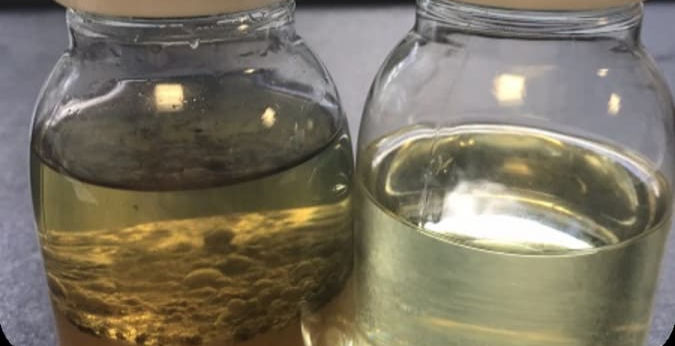What Is Fuel Tank Sludge—and Why You Shouldn’t Ignore It
- Adelphi Enivronmental

- Mar 28
- 2 min read
You can’t see it from above ground—but sludge at the bottom of your fuel tank could be quietly damaging your entire operation.
Fuel tank sludge is a common issue in underground storage tanks (USTs), especially at high-volume or older fueling sites. Left untreated, it can lead to clogged filters, slow-flow dispensers, corrosion, failed inspections, and even insurance claim denials.
Here’s what fuel sludge really is, how it forms, and why routine cleaning and polishing is your best line of defense.

What is fuel tank sludge made of?
Sludge is a thick, sticky buildup that forms at the bottom of a fuel tank over time. It’s made up of:
Water
Microbial growth (algae and bacteria)
Rust particles
Fuel degradation byproducts
Sediment from aging infrastructure or poor-quality fuel
As the sludge layer grows, it reduces tank capacity, interferes with sensors, and clogs lines and filters.
How does sludge form in underground tanks?
The primary culprit is water intrusion—often from condensation, damaged seals, or poor vapor recovery. Since water is heavier than fuel, it sinks to the bottom of the tank where it creates the perfect breeding ground for microbial growth.
These microbes feed on fuel, multiply rapidly, and form a gel-like substance that eventually becomes sludge. It’s especially common in diesel systems or in tanks that sit idle for long periods.
Why sludge is more dangerous than it seems
Sludge might be out of sight, but the problems it causes are anything but:
Dispensers may begin to pump more slowly—or shut down entirely
Filters clog more often, requiring frequent replacement
Sensors may fail or give inaccurate readings
Your fuel can become hazy, discolored, or foul-smelling
Corrosion increases on tank walls, pipes, and fittings
Regulators may issue citations or require corrective action
What’s the solution? Fuel polishing and tank cleaning
Sludge won’t go away on its own—and replacing fuel every time isn’t cost-effective. Instead, Adelphi uses fuel polishing systems to filter and restore your fuel to a usable state, and vacuum-based tank cleaning to remove sludge, debris, and water.
This service is ideal for:
Gas stations with older infrastructure
Diesel fleets or bulk fuel tanks
Sites that have been out of service or underused
Facilities preparing for inspection or sale
When to schedule fuel polishing and tank cleaning
You should schedule sludge removal if you notice:
Clogged filters
Pump slowdowns
Hazy or discolored fuel
Recurring sensor alarms
Water detected during dipstick or paste tests
Fuel sitting for more than 3–6 months without use
Many clients pair polishing with their routine compliance testing to keep everything in check at once.
Protect Your Fuel, Equipment, and Compliance Status
Sludge doesn’t just harm your tank—it threatens your uptime, inspection results, and the lifespan of your entire system. Adelphi Environmental makes it easy to remove contaminants and restore tank health with minimal downtime.
Schedule a fuel polishing service or request a tank health checkup before your next inspection.

.png)



Comments